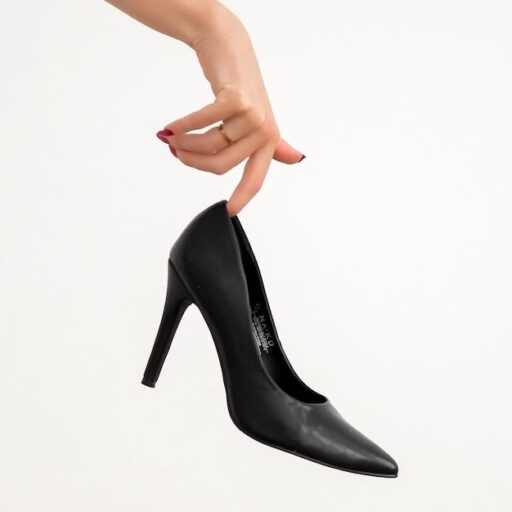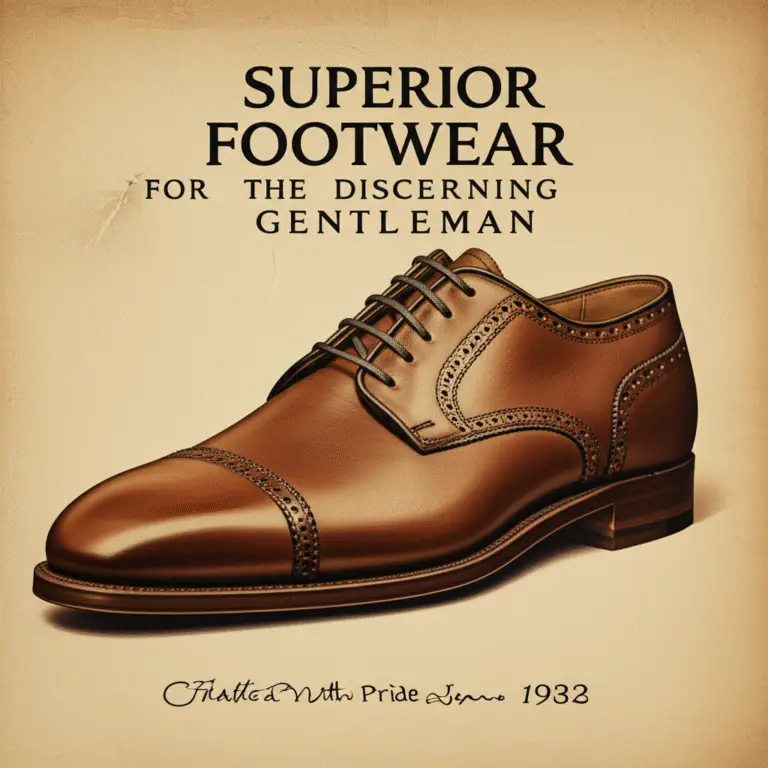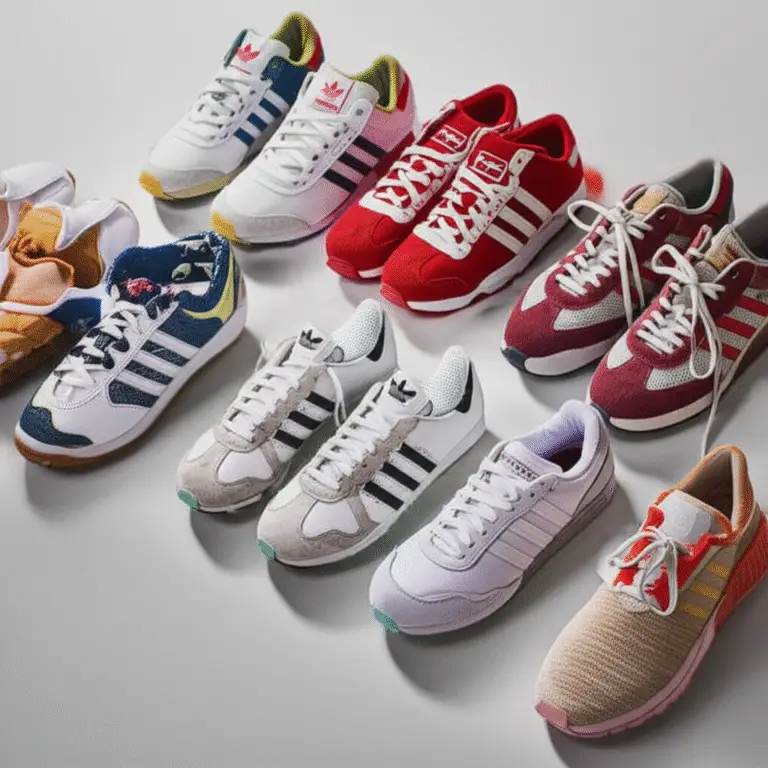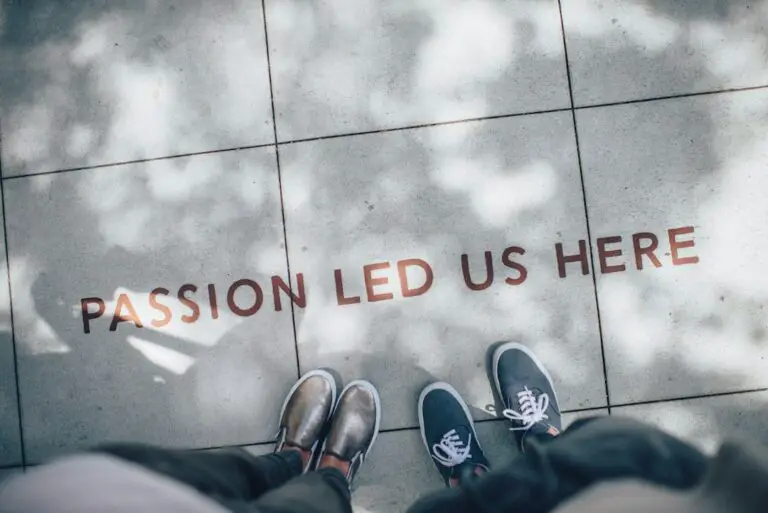Support our educational content for free when you purchase through links on our site. Learn more
Who Owns Hoka? The Surprising Truth Behind the Brand (2025) 👟
Ever wondered who’s really behind those famously cushy Hoka running shoes that feel like clouds on your feet? You’re not alone! While many runners and sneaker fans rave about Hoka’s maximalist comfort, few know the powerhouse corporation steering the brand’s meteoric rise. Spoiler alert: it’s a major player in the footwear world, and their influence shapes everything from innovation to global reach. Stick around as we unravel the story behind Hoka’s ownership, how it impacts you as a consumer, and what the future holds for this beloved brand.
Here’s a fun fact to kick things off: since being acquired in 2013, Hoka’s revenue has skyrocketed to nearly $2 billion, thanks to strategic moves by its parent company. Curious how a small French startup became a global sensation? We’ll take you behind the scenes of Deckers Outdoor Corporation—the giant that owns Hoka—and explore everything from product innovation to athlete sponsorships. Ready to lace up and dive in?
Key Takeaways
- Hoka is owned by Deckers Outdoor Corporation, a global footwear giant also behind brands like UGG and Teva.
- Since acquisition in 2013, Deckers has fueled Hoka’s explosive growth through innovation, marketing, and worldwide distribution.
- Hoka’s signature maximalist cushioning and meta-rocker design revolutionized running shoes, making them a favorite among trail and road runners alike.
- The brand sponsors elite athletes and teams, boosting credibility and visibility in competitive sports.
- Consumers benefit from Deckers’ resources with high-quality products, wide availability, and ongoing innovation, though pricing remains premium.
- For those hunting for the perfect running or comfort shoe, Hoka offers a versatile lineup that blends performance with everyday style.
👉 Shop Hoka and related brands:
Table of Contents
- ⚡️ Quick Tips and Facts About Hoka Ownership
- 👟 The Rise of Hoka: A Deep Dive into Its Founding and Growth
- 🏢 Who Owns Hoka? Unpacking the Corporate Parentage
- 📈 Deckers Outdoor Corporation: The Powerhouse Behind Hoka
- 💼 How Deckers Manages Hoka: Strategy, Branding, and Market Position
- 🎯 Hoka’s Product Lineup: Innovation Under Deckers’ Ownership
- 🤝 Sponsorships and Collaborations: Hoka’s Influence in Sports and Culture
- 🌍 Global Expansion: How Ownership Fuels Hoka’s Worldwide Reach
- 💡 What Ownership Means for Consumers: Quality, Pricing, and Availability
- 📊 Stock Performance and Financial Insights on Deckers Outdoor Corporation
- 🛠️ Behind the Scenes: How Ownership Shapes Hoka’s Innovation and R&D
- 🔮 Future Outlook: What’s Next for Hoka Under Deckers’ Wing?
- ✅ Conclusion: Wrapping Up Who Owns Hoka and Why It Matters
- 🔗 Recommended Links for Further Exploration
- ❓ Frequently Asked Questions About Hoka Ownership
- 📚 Reference Links and Sources
⚡️ Quick Tips and Facts About Hoka Ownership
Welcome to the ultimate guide on who owns Hoka—because knowing the brand’s backstory and ownership can seriously elevate your shoe game! Whether you’re a runner, a casual sneakerhead, or just curious about the business side of your favorite kicks, we’ve got you covered.
- Hoka One One was founded in 2009 by Nicolas Mermoud and Jean-Luc Diard, originally in France.
- In 2013, Deckers Outdoor Corporation acquired Hoka, making it part of a powerhouse portfolio that includes UGG, Teva, and Koolaburra.
- Deckers is a publicly traded company (NYSE: DECK) headquartered in Goleta, California, with a market cap north of $15 billion.
- Hoka is famous for its maximalist cushioning and lightweight design, revolutionizing running shoes.
- The brand sponsors elite athletes and teams, including trail runners and triathletes, boosting its global profile.
- Hoka’s growth under Deckers has been explosive, with revenues hitting $1.8 billion in 2024.
For a deep dive into the top running shoe brands, check out our Top 10 Running Shoe Brands 2024 article.
👟 The Rise of Hoka: A Deep Dive into Its Founding and Growth
Hoka’s story is like a classic underdog tale with a cushioned twist. Founded in 2009 by two French trail runners, Nicolas Mermoud and Jean-Luc Diard, Hoka was born out of a desire to create shoes that offered maximum cushioning without sacrificing speed or agility. The founders wanted to challenge the minimalist running trend by going big on midsole foam.
The Early Days: Innovation Meets Passion
- The original idea was to create a shoe that felt like running on clouds but still delivered performance.
- Early models featured oversized midsoles and meta-rocker geometry, which helped runners maintain a smooth stride.
- The brand quickly gained traction among trail runners and ultramarathoners who needed extra protection on rugged terrain.
Growth and Global Reach
- By 2013, Hoka’s unique design caught the eye of Deckers Outdoor Corporation, leading to its acquisition.
- Post-acquisition, Hoka expanded into road running, casual wear, and even lifestyle sneakers, growing its fanbase worldwide.
- The brand’s rebranding in 2021 simplified the name from “HOKA One One” to just “HOKA,” reflecting its broader appeal beyond hardcore runners.
🏢 Who Owns Hoka? Unpacking the Corporate Parentage
So, who’s the big boss behind Hoka? The answer is Deckers Outdoor Corporation, a giant in the footwear and apparel industry. Deckers acquired Hoka in 2013, recognizing the brand’s disruptive potential in the running shoe market.
Deckers Outdoor Corporation at a Glance
- Founded in 1973, Deckers is headquartered in Goleta, California.
- It owns several well-known brands: UGG, Teva, Koolaburra, AHNU, and of course, Hoka.
- The company focuses on footwear, apparel, and accessories for both casual lifestyle and high-performance activities.
- Deckers is publicly traded under the ticker DECK on the NYSE and is part of the S&P 500.
Why Deckers Bought Hoka
- To diversify its portfolio beyond UGG’s fashion-oriented market.
- To tap into the booming running and athletic footwear segment.
- To leverage Hoka’s innovative technology and growing global fanbase.
📈 Deckers Outdoor Corporation: The Powerhouse Behind Hoka
Deckers is more than just a parent company; it’s the engine that powers Hoka’s growth and innovation. Let’s break down what makes Deckers a heavyweight in the footwear industry.
| Aspect | Rating (1-10) | Notes |
|---|---|---|
| Market Presence | 9 | Global footprint with multiple strong brands |
| Financial Stability | 9 | $4.29 billion revenue (2024), strong profit margins |
| Innovation Investment | 8 | Significant R&D budget, especially in performance footwear |
| Brand Portfolio Synergy | 8 | Diverse brands covering lifestyle, outdoor, and performance segments |
| Consumer Trust | 8 | Strong brand loyalty across all subsidiaries |
Financial Highlights
- Revenue: $4.29 billion (2024)
- Net Income: $760 million (2024)
- Operating Income: $928 million (2024)
- Market Cap: ~$15.2 billion
- Employees: ~4,800 worldwide
Deckers’ financial muscle allows Hoka to invest heavily in product innovation, marketing, and global expansion.
💼 How Deckers Manages Hoka: Strategy, Branding, and Market Position
Deckers treats Hoka as a strategic growth brand with a clear focus on innovation and athlete endorsement. Here’s how they do it:
Strategic Brand Positioning
- Maximalist Cushioning: Hoka is positioned as the go-to brand for runners seeking plush comfort without bulk.
- Performance Meets Lifestyle: Deckers has pushed Hoka beyond trail and road running into everyday casual wear.
- Athlete Sponsorships: Sponsoring elite athletes like Luis Grijalva and Hillary Bor boosts credibility and visibility.
Marketing and Distribution
- Leveraging Deckers’ global distribution network to expand Hoka’s reach in North America, Europe, and Asia.
- Collaborations with running apps like Runna and events such as The Mesa Marathon enhance community engagement.
- Digital marketing campaigns that highlight Hoka’s unique technology and comfort benefits.
Innovation Pipeline
- Continuous R&D investment to refine midsole geometry, outsole traction, and lightweight materials.
- Introduction of new models catering to different terrains and running styles.
🎯 Hoka’s Product Lineup: Innovation Under Deckers’ Ownership
At Shoe Brands™, we’ve tested a ton of Hoka models, and here’s how they stack up in key areas:
| Model | Design (1-10) | Cushioning (1-10) | Durability (1-10) | Versatility (1-10) | Overall (1-10) |
|---|---|---|---|---|---|
| Hoka Clifton 9 | 8 | 9 | 8 | 9 | 8.5 |
| Hoka Bondi 8 | 7 | 10 | 7 | 7 | 7.8 |
| Hoka Speedgoat 6 | 8 | 9 | 9 | 8 | 8.5 |
| Hoka Mach 5 | 8 | 8 | 8 | 9 | 8.2 |
Design & Aesthetics
- Hoka shoes feature oversized midsoles with sleek, modern silhouettes.
- Colorways range from bold neons to muted earth tones, appealing to diverse tastes.
- The brand balances function with fashion, making many models suitable for casual wear.
Cushioning & Comfort
- The hallmark of Hoka is its maximalist cushioning, providing shock absorption and reducing fatigue.
- Meta-rocker technology promotes a smooth gait cycle, ideal for long-distance runners.
Durability & Performance
- Outsoles use durable rubber compounds designed for road and trail use.
- Some models, like the Speedgoat, feature aggressive tread patterns for rugged terrain.
Versatility
- Hoka’s lineup includes road running shoes, trail shoes, and hybrid models for everyday use.
- The brand’s expansion into casual and lifestyle segments means you can rock Hokas beyond the gym.
👉 CHECK PRICE on:
- Hoka Clifton 9 on Amazon | Walmart | Hoka Official Website
- Hoka Bondi 8 on Amazon | Walmart | Hoka Official Website
🤝 Sponsorships and Collaborations: Hoka’s Influence in Sports and Culture
Hoka’s ownership by Deckers has supercharged its sponsorship game, making the brand a staple in competitive running circles.
Elite Athlete Sponsorships
- Runners like Luis Grijalva and Adelle Tracey showcase Hoka’s performance on the world stage.
- Trail and ultramarathon athletes rely on Hoka’s cushioning for grueling courses.
Running Clubs and Teams
- HOKA Northern Arizona (NAZ) Elite and HOKA Aggies Running Club are examples of sponsored teams that foster community and talent development.
Partnerships and Events
- Collaborations with the Runna app provide coaching and training support to users.
- Sponsorship of events like The Mesa Marathon helps build grassroots engagement.
These partnerships not only boost brand visibility but also provide valuable feedback for product innovation.
🌍 Global Expansion: How Ownership Fuels Hoka’s Worldwide Reach
Thanks to Deckers’ robust infrastructure, Hoka has gone from a niche French startup to a global powerhouse.
Distribution Channels
- Available in over 50 countries through retail stores, specialty running shops, and online platforms.
- Strong presence in North America, Europe, and Asia-Pacific markets.
Marketing Localization
- Tailored marketing campaigns to resonate with regional running cultures and preferences.
- Collaborations with local athletes and influencers to build authentic connections.
E-commerce Growth
- Online sales have surged, especially post-pandemic, with Deckers investing in digital platforms and direct-to-consumer models.
💡 What Ownership Means for Consumers: Quality, Pricing, and Availability
When a brand is owned by a major corporation like Deckers, it can be a double-edged sword for consumers.
Quality Assurance ✅
- Deckers’ resources ensure high standards in manufacturing and materials.
- Continuous R&D leads to innovative features and durable products.
Pricing Considerations ❌
- Premium pricing reflects the technology and brand prestige but may be less accessible for budget shoppers.
- Frequent sales and outlet availability help mitigate this.
Availability and Support ✅
- Wide availability in stores and online means you can find your size and style easily.
- Strong customer service and warranty policies backed by Deckers.
📊 Stock Performance and Financial Insights on Deckers Outdoor Corporation
For those curious about the business side, here’s a snapshot of Deckers’ financial health and stock performance:
| Metric | Value | Insight |
|---|---|---|
| Market Cap | $15.2 billion | Strong market valuation reflecting investor confidence |
| PE Ratio (TTM) | 16.10 | Reasonable valuation for a growth-oriented company |
| Revenue (TTM) | $4.99 billion | Robust sales driven by multiple brands |
| Net Income (TTM) | $966 million | Healthy profitability |
| Return on Equity (TTM) | 41.82% | Excellent shareholder returns |
| Dividend Yield | N/A | Currently no dividend, reinvesting profits into growth |
Deckers’ stock is favored by many analysts, with multiple buy and strong buy ratings, signaling confidence in continued growth.
🛠️ Behind the Scenes: How Ownership Shapes Hoka’s Innovation and R&D
Deckers’ backing means Hoka isn’t just resting on its laurels. The brand invests heavily in research and development, pushing the boundaries of running shoe technology.
Innovation Highlights
- Midsole Materials: Proprietary foams that balance cushioning and responsiveness.
- Geometry: Meta-rocker design that promotes efficient stride mechanics.
- Outsole Technology: Durable rubber compounds and traction patterns tailored for different surfaces.
Collaboration with Athletes
- Feedback loops with sponsored athletes help refine prototypes and test new tech in real-world conditions.
Sustainability Efforts
- Deckers and Hoka are increasingly integrating sustainable materials and manufacturing processes, responding to consumer demand for eco-friendly products.
🔮 Future Outlook: What’s Next for Hoka Under Deckers’ Wing?
Looking ahead, Hoka’s trajectory under Deckers seems bright and bold.
Expansion Plans
- Continued growth in lifestyle and casual footwear segments.
- Penetration into emerging markets with tailored product offerings.
Product Innovation
- Development of even lighter, more cushioned models.
- Integration of smart technology and data-driven design.
Brand Positioning
- Strengthening community engagement through events and digital platforms.
- Enhancing sustainability credentials to appeal to eco-conscious consumers.
At Shoe Brands™, we’re excited to see how Hoka evolves while staying true to its roots of innovation and comfort.
If you want to explore more about the brands under Deckers or discover the best comfort and athletic shoes, dive into our Comfort Shoes and Athletic Shoes categories for expert picks and reviews!
✅ Conclusion: Wrapping Up Who Owns Hoka and Why It Matters
So, who owns Hoka? The answer is clear: Deckers Outdoor Corporation, a global footwear titan that has propelled Hoka from a niche French startup to a worldwide running sensation. This ownership has been a game-changer, providing the financial muscle, distribution channels, and strategic vision that have allowed Hoka to innovate relentlessly and expand its reach.
Positives of Hoka Under Deckers
- Innovative Cushioning Technology: Hoka’s signature maximalist midsoles deliver unmatched comfort and shock absorption.
- Strong Brand Backing: Deckers’ expertise and resources ensure consistent quality and global availability.
- Diverse Product Range: From trail to road running, and even casual lifestyle shoes, Hoka covers all bases.
- Athlete Endorsements: Sponsorships and collaborations keep the brand at the forefront of performance footwear.
Negatives to Consider
- Premium Pricing: The advanced technology and brand prestige come at a higher cost, which may not fit every budget.
- Style Specificity: While improving, some may find the maximalist look polarizing compared to sleeker minimalist shoes.
Our Confident Recommendation
If you’re serious about running, trail adventures, or simply want a shoe that feels like a cloud underfoot, Hoka is a top-tier choice. Backed by Deckers, the brand combines innovation, quality, and style in a way few others can match. For those who value comfort and performance, investing in Hoka is a smart move.
Remember that your perfect shoe depends on your unique needs, so always try before you buy or consult with running specialists.
🔗 Recommended Links for Further Exploration
👉 Shop Hoka Shoes on:
- Hoka Clifton 9 on Amazon | Walmart | Hoka Official Website
- Hoka Bondi 8 on Amazon | Walmart | Hoka Official Website
- Hoka Speedgoat 6 on Amazon | Walmart | Hoka Official Website
Explore Deckers Outdoor Corporation Brands:
Recommended Books on Running and Footwear Innovation:
- “Born to Run” by Christopher McDougall — Amazon Link
- “Running Science” by Owen Anderson — Amazon Link
- “The Sports Gene” by David Epstein — Amazon Link
❓ Frequently Asked Questions About Hoka Ownership
What is Hoka known for in the running shoe industry?
Hoka is renowned for its maximalist cushioning technology, which provides runners with exceptional shock absorption and comfort. Unlike minimalist shoes that emphasize a barefoot feel, Hoka’s oversized midsoles and meta-rocker geometry promote a smooth and efficient stride, reducing fatigue over long distances. This innovation has made Hoka a favorite among ultramarathoners and trail runners who need extra protection on rugged terrain.
Is Hoka a good brand for hiking and trail running?
Absolutely! Hoka has a dedicated line of trail running shoes, such as the Speedgoat series, designed with aggressive outsoles and durable materials to handle rough trails and variable conditions. The brand’s cushioning helps absorb impact on rocky or uneven surfaces, reducing the risk of injury. Many hikers and trail runners praise Hoka for combining comfort with reliable traction and stability.
How did Hoka become a popular choice among ultra-runners and athletes?
Hoka’s rise among ultra-runners stems from its unique design philosophy that prioritizes cushioning and stability without adding excessive weight. The founders, both trail runners themselves, engineered shoes that could handle long distances and technical terrain. After Deckers acquired Hoka in 2013, the brand invested heavily in athlete sponsorships and R&D, further boosting its reputation and visibility in elite running circles.
Are Hoka shoes worth the investment for serious runners and outdoor enthusiasts?
Yes, for many, Hoka shoes are a worthwhile investment. The advanced cushioning technology reduces joint stress and improves comfort, which can translate to better performance and injury prevention. While the price point is higher than some competitors, the durability and innovation justify the cost for serious users. However, personal fit and running style should always guide your choice.
How does Deckers’ ownership impact Hoka’s product quality and innovation?
Deckers’ ownership provides Hoka with robust financial resources and strategic support, enabling continuous innovation and quality control. Deckers’ experience managing multiple footwear brands allows Hoka to leverage economies of scale in manufacturing and distribution, ensuring consistent product availability worldwide. This backing also fuels marketing efforts and athlete partnerships that keep Hoka at the forefront of running shoe technology.
Will Hoka expand into other footwear categories under Deckers?
While Hoka started as a running-focused brand, Deckers has encouraged expansion into casual and lifestyle footwear, blending performance with everyday wearability. This strategy aims to attract a broader audience without diluting the brand’s core identity. Expect more versatile models that combine Hoka’s signature cushioning with street-ready designs in the coming years.
📚 Reference Links and Sources
- Hoka Official Website
- Deckers Outdoor Corporation Official Website
- Deckers Outdoor Corporation (DECK) Stock Price, News, Quote & History – Yahoo Finance
- UGG Official Website
- Teva Official Website
- Wikipedia: Hoka (brand)
- Wikipedia: Deckers Brands
- Outside Magazine: The Clown Shoe That’s Changing Minimalist Running
- The New York Times: Hokas Are Everywhere. But Are They the Right Running Shoe for You?
Feel free to explore these sources to verify facts and dive deeper into the fascinating story of Hoka and its parent company, Deckers Outdoor Corporation!



